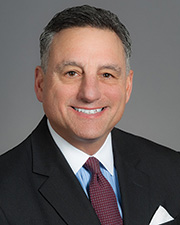

While other U.S. cities have demonstrated volatile economic markets, Boston has sustained a strong, healthy economy for more than 40 years. This economic health coupled with the city’s diversity of industries has had a lasting, positive impact and increased demand for commercial space.
Overview: The snapshot of the Class A and B, lab and office market is strong but shows some signs of regression. Today’s overall vacancy for lab & office including sublet space is 12.8%. When you break down the numbers by region, the current downtown Boston office market has 71 million s/f, with a 9.2% vacancy rate. Cambridge has 23.6 million s/f of space and a 3.8% vacancy, and the suburbs total 123.5 million s/f with 16.6% vacancy. The entire Boston area absorption for lab/office space is 5.2 million s/f. While those stats are favorable compared to the last two years, (2017 with 1.8 million s/f and 2016 with 1 million s/f), they’re dwarfed by 2015 which had absorption of 5.8 million s/f. It is also the first time that class B rents have topped $50 per s/f in aggregate. Class A office rents are at record highs of $63 per s/f and still record high tenant demand.
Boston: With only a few large blocks of office space left and a very fluid leasing market, availability is a challenge. Two million s/f of office space was absorbed in 2018. Notable downtown Boston leases include Wayfair Inc. (395,000 s/f, Back Bay); Amazon (430,000 s/f, Seaport); Oath Inc. (440,000 s/f at North Station) and Putnam Investments, which completed its HQ relocation for nearly 250,000 s/f at 100 Federal Street, Boston. A prominent market trend has been company migration into Boston and Cambridge to attract and retain young talent. This employee demand has benefitted the Seaport area (live, play, work), as rents climb towards $100 per s/f in East Cambridge and Back Bay. The lowest Boston submarket vacancy is Charlestown (3.2%) and the highest is the Seaport (12.6%). Other impactful trends include the co-working craze, consolidation and operational efficiency, and insatiable lab demand. WeWork, a prominent co-working space, constantly looks to lease blocks of 100,000 to 200,000 s/f at a time, as they become one of the largest landlords in Boston. ezCater, an international corporate catering firm, is an example of co-working in which they leased 100,000 s/f from WeWork at 40 Congress Street. New Boston development projects continue at: Two Drydock Avenue; 321 Harrison Avenue, Parkside on A, and The Beat.
Cost Concerns: There has been a steady 35-40% increase in asking rents over the past five years. Downtown Boston rents have increased by $30+ per square foot during that same period; suburban office rents for Class A properties have increased $12-15 per square foot during that same period. As five year leases expire, accelerated rental costs are unavoidable.
Cambridge: East Cambridge has the lowest vacancy (1.2%) with rents exceeding $100 per s/f while West Cambridge / Alewife Station has the highest vacancy (20.1%). Tech Drive has experienced nearly a 70% rent inflation. Five years ago rents were $51 per s/f triple net, and today rents are $85 per s/f, triple net. With vacancy so low, new leasing is limited and highly competitive. Sanofi committed 900,000 s/f for 2,700 employees at Cambridge Crossings. Phillips committed 337,000 s/f from DivcoWest in East Cambridge. 90% of leasing has been on speculative or renovated properties. Due to the low availability, “space banking” (when a company leases more space than necessary and sublets or warehouses the space until needed) has become popular.
Inner Suburbs: The Inner Suburbs with 6.77 million s/f of inventory and, a low vacancy (11.2%) have become a very attractive value alternative for lab and office space, especially for artificial intelligence (AI) and companies supporting AI, robotics, and academia. The need for space has spread to the inner suburbs in areas such as Watertown, Allston, Somerville and Fenway. Watertown most recently is experiencing a development explosion with a one million s/f renovation/redevelopment of Arsenal Mall into retail, residential and office space, among other sound projects. This market is converting many of its older industrial stock into “must need” lab space as a relief valve to the low vacancy and high priced Cambridge market. In addition, hospitals and area universities are competing for commercial and campus space. Hebrew College is new to this market and seeking 40-60,000 s/f as it recently monetized its Newton campus.
The Boston Suburbs: There is 123.5 million s/f of total inventory in the suburban market. The highest vacancy is Rt. 495 North (21.1%). Trends show a reverse migration from Cambridge to the suburbs to find suitable space and save significantly on rent. There is an abundance of tenant activity, flight to quality and tenant amenities. The suburbs are a true value alternative market. Some company owners are tired of the Boston commute, and demographics show that younger married employees are shifting to suburban housing. For example, Burlington, MA has attracted Boston-based service companies at a more affordable rent. The Waltham-Wellesley corridor offers quality and location at discount pricing to Boston, such as Liberty Mutual, SunLife and Wellesley Office Park. But hospitals and medical providers continue to push into the traditional suburban office scene creating higher demand. These activities pressure rental rate increases and lack of inventory.
Industrial Market: It has been a dynamic year for the industrial market, with the advent of e-commerce highlighted by Wayfair and Amazon. JC Cannistraro opened its Seaport manufacturing facility, a former abandoned military WWII facility, planning for hundreds of new jobs. It is one of the larger industrial deals in Boston proper in recent years. The overall industrial market has 148.5 million s/f of inventory and a shrinking vacancy of 9.9%. The Rt. 128 North market is the tightest market (6.6% vacancy). Rt. 128 South market and urban markets carry a higher vacancy (13.8%). The NECCO building vacancy solely accounts for most of the urban market vacancy. The impact of cannabis legalization is notable with NETA (100,000 s/f at 5 Forge Park, Franklin, MA) and has created strong demand. Speculative industrial development and limited first class industrial space has created an increase in rental rates to $8.99 per s/f, all net. The cannabis lease transactions are fueling a higher increase to $10-15 per s/f, all net. Additionally, there are quiet space needs including 150,000 s/f on the South Shore and 300,000 – 500,000 s/f in the Northwest suburban market. Those space-needs create more stress on an already limited industrial market.
Rob Nahigian, FRICS,SIOR, CRE,MCR, is principal at Auburndale Realty Co. and Bob Cleary, SIOR,CRE, is senior vice president at Colliers International, Boston.








